
Viinaköögi arhitektuurses käsitluses ei ole soovitud unikaalset hoonemahtu muundada pisikeseks armsaks ühepereelamuks. Oluliseks on peetud säilitada olemasolevat arhitektuurset kehandit maksimaalselt ning seda lausa võimendada. Viimistlusmaterjalidest kõrvutuvad tööstusliku betoonviimistlusega puit ning must metall. Kuna viinaköök koosneb erinevatel ajajärkudel ehitatud/ümber ehitatud ehituskehanditest, ei ole 1. ja 2. korruse aknad kohakuti. Et vältida akende ümber rajamist ajaloolistes müürides, on erinevate akna rütmide maskeerimiseks kavandatud puitribid. Elutoa ja köögi pikenduseks on kavandatud mahust välja turritavad verandad, millede välispind on viimistletud betooniga ning sisepind interjööriga sarnaselt naturaalse puiduga. Olemasolev viilkatus on asendatud lamekatusega, mis koos katuse serva akende ribaga astub müüride mahust sisse poole. Selliselt eristub uus sekkumine olemasolevast mahust ning annab hoonele moodsa noodi ja lisaks püüab siseruumi päikesevalgust.
Viinaköögi ruumiplaneeringu puhul on aluseks võetud olemasolev ajalooliste seinte struktuur, mis uhke tellistest pikisiseseinaga on jaotatud pooleks. Käesolevaga on jätkatud pikiseina motiivi ning välja töötatud kuubikuliste mahtude printsiip. Kavandatud on suletud kuubikud e. ruumid, mis on privaatse iseloomuga (magamistoad, vannituba, majandusruumid, köök) ning nende vahele jääv ruum on ära kasutatud avatud funktsioonide tarbeks (elutuba, kabinet/ raamatukogu, käsitöötuba, eeskoda, garderoob). Selliselt on lõhutud senine tugev korteriteks jaotatud interjöör ning mõjule pääsevad tühjad ja täis ruumid. Hoone interjööri kuubikuliste mahtude süsteemist tulenevalt on fassaadist ostekui osad interjööri ruumikuubikud välja tõmmatud ning moodustavad ida ja lääne fassaadidele veranda aktsendid.
Viinaköögiga on varikatuse abil liidetud uus abihoone, mis jätkab kuubikuliste mahtude kompositsiooni ning sarnaneb kujunduselt viinaköögi veranda motiivi. Abihoone maapealse osa moodustab saun abiruumidega ning auto varjualune. Ida poole on kavandatud nn. maa- alune osa, mis kasutab ära maapinna langemist ida suunas. Maa- alusesse osasse on kavandatud panipaik ja kuur.
In the architectural approach of the vodka kitchen, it is not desired to turn the unique volume of the building into a small, lovely single-family house. It has been considered important to preserve the existing architectural body to the maximum and to amplify it. The finishing materials are wood and ferrous metal with an industrial concrete finish. As the vodka kitchen consists of buildings built / rebuilt in different periods, the windows on the 1st and 2nd floors are not aligned. To prevent windows from being built around historic walls, wooden strips are designed to mask the different rhythms of the window. For the extension of the living room and kitchen, verandas that are ruffled out of volume have been designed, the outer surface of which is finished with concrete and the inner surface with the interior, similar to natural wood. The existing pitched roof has been replaced by a flat roof, which, together with the strip of windows on the edge of the roof, enters half the volume of the walls. In this way, the new intervention differs from the existing volume and gives the building a modern note and also catches sunlight indoors.
The spatial plan of the vodka kitchen is based on the existing structure of historical walls, which is divided in half with a magnificent brick longitudinal inner wall. The motif of the longitudinal wall has been continued and the principle of cubic volumes has been developed. Closed cubes are designed e. rooms that are private in nature (bedrooms, bathroom, utility rooms, kitchen) and the space between them has been used for open functions (living room, office / library, craft room, hall, wardrobe). In this way, the current strong interior divided into apartments has been destroyed and empty and full rooms can be affected. Due to the system of cubic volumes in the interior of the building, some of the interior space cubes have been pulled out of the façade and form accents to the porch on the east and west façades.
A new auxiliary building has been connected to the vodka kitchen by means of an awning, which continues the composition of the cubic volumes and is similar in design to the motif of the vodka kitchen porch. The above-ground part of the auxiliary building consists of a sauna with auxiliary rooms and a car shelter. To the east, a so-called the underground part, which takes advantage of the ground falling to the east. A storage room and a shed are planned for the underground part.
Risto Parve, Kai Süda, Margit Valma, Marju Tammik
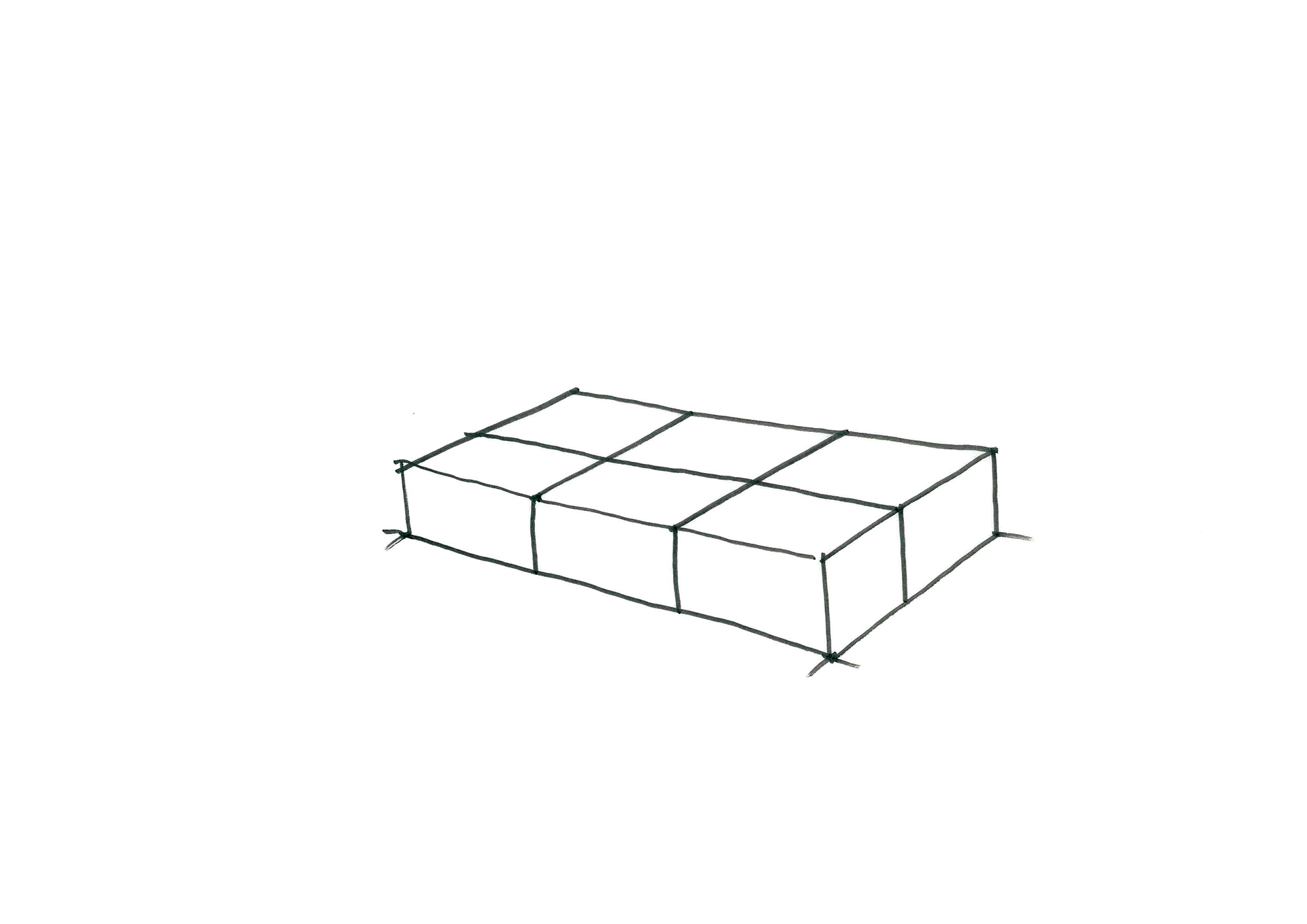
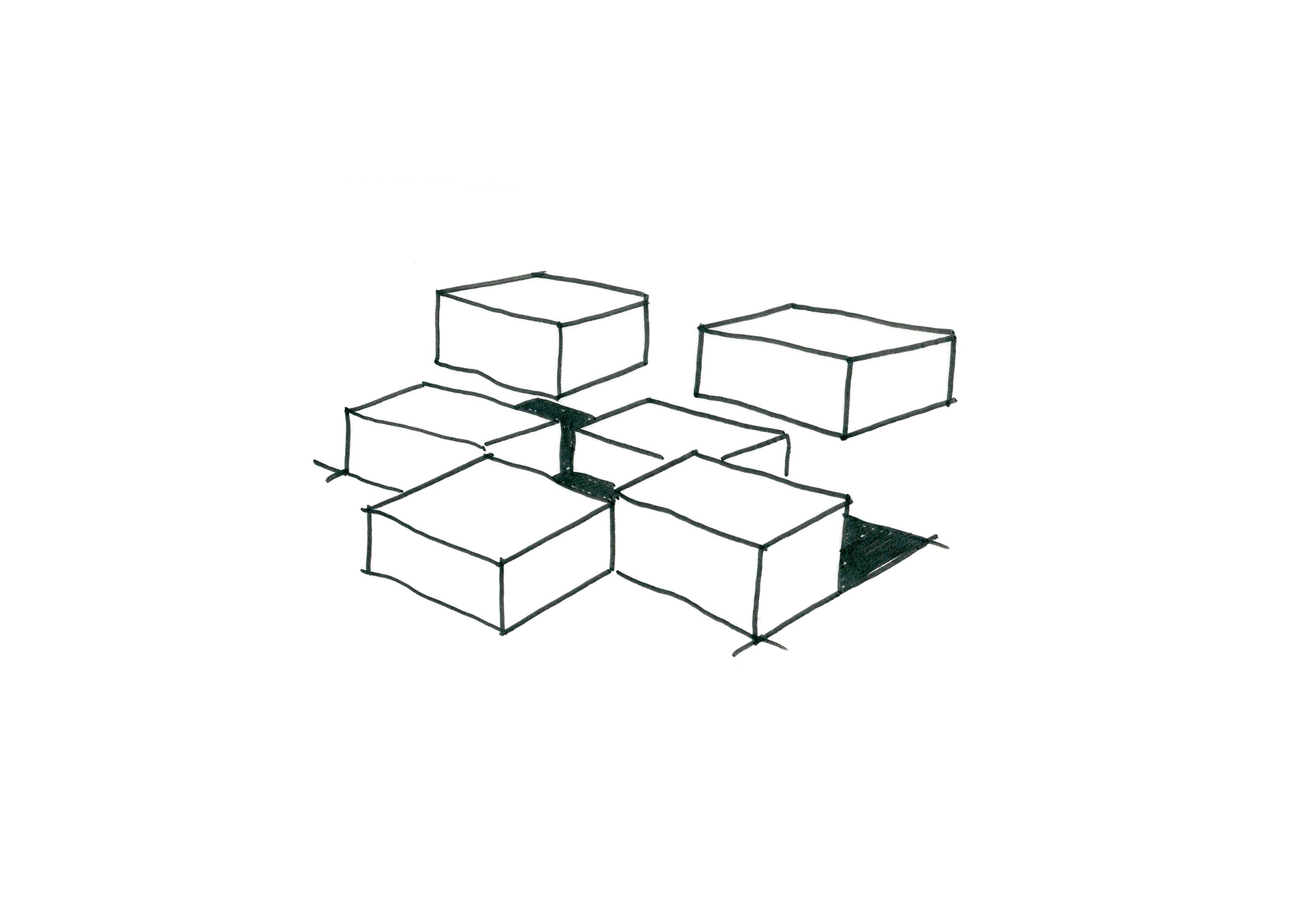

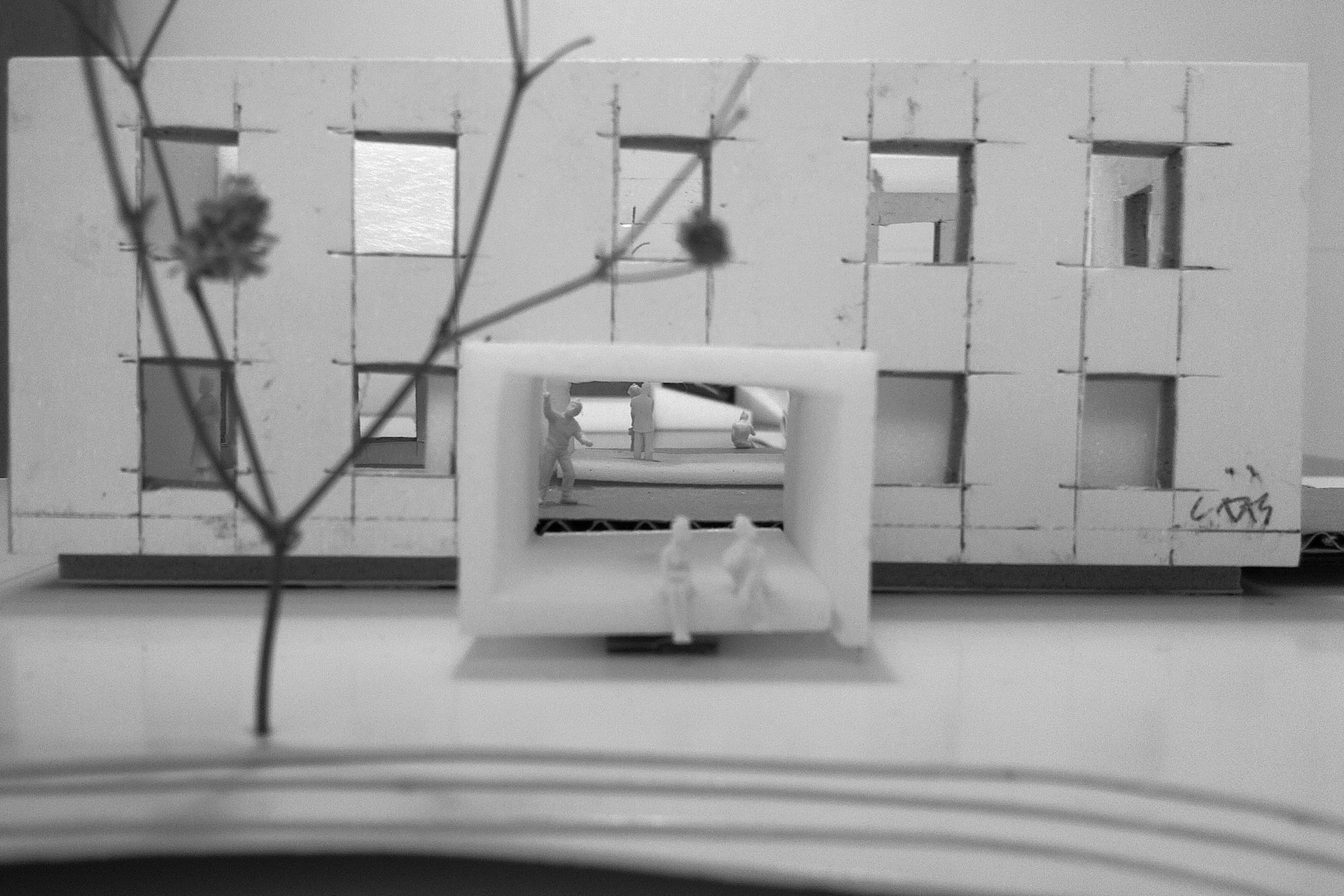

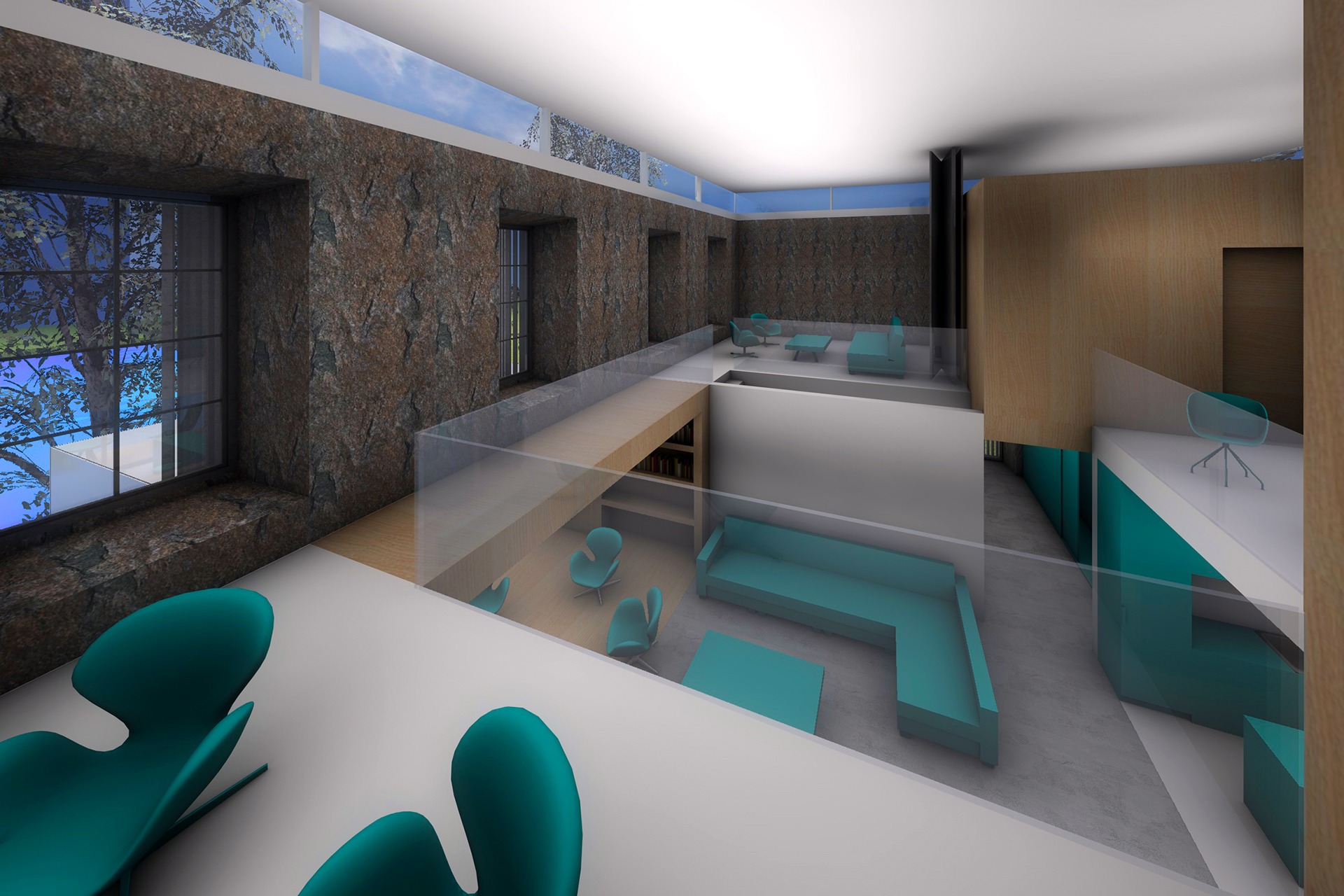
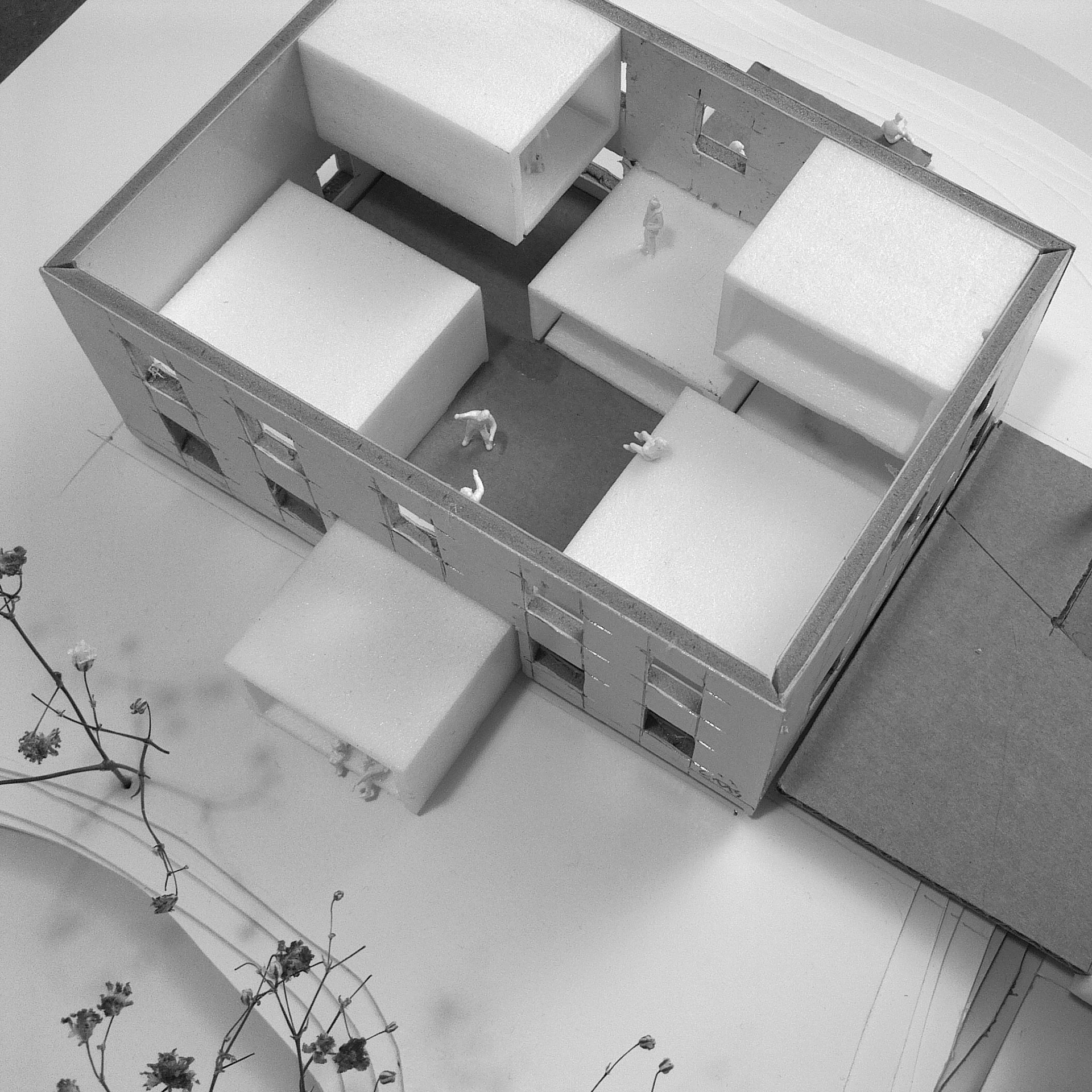
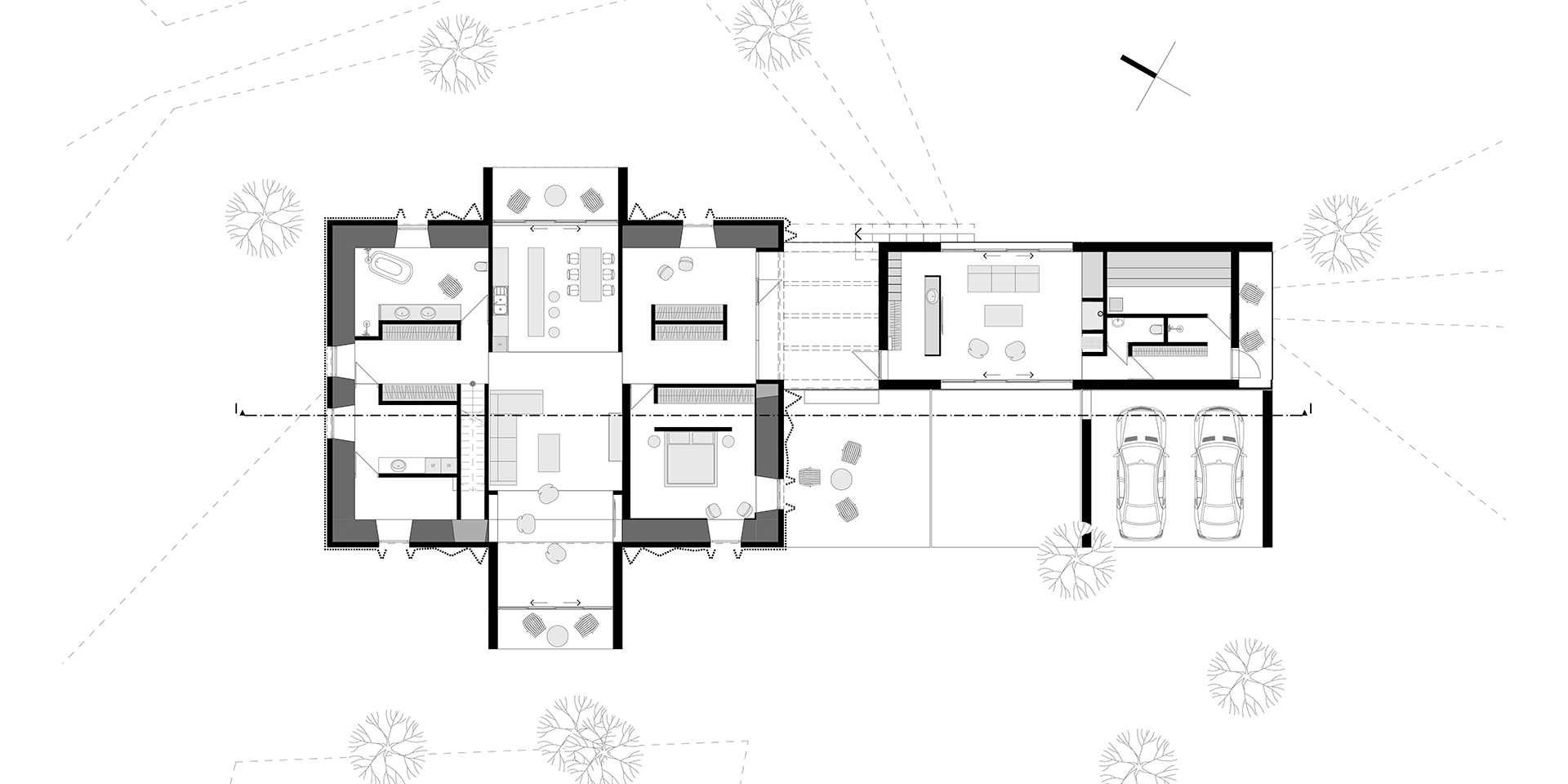 1. Korrus / Ground Floor
1. Korrus / Ground Floor
 2. Korrus / First Floor
2. Korrus / First Floor
 Section
Section

